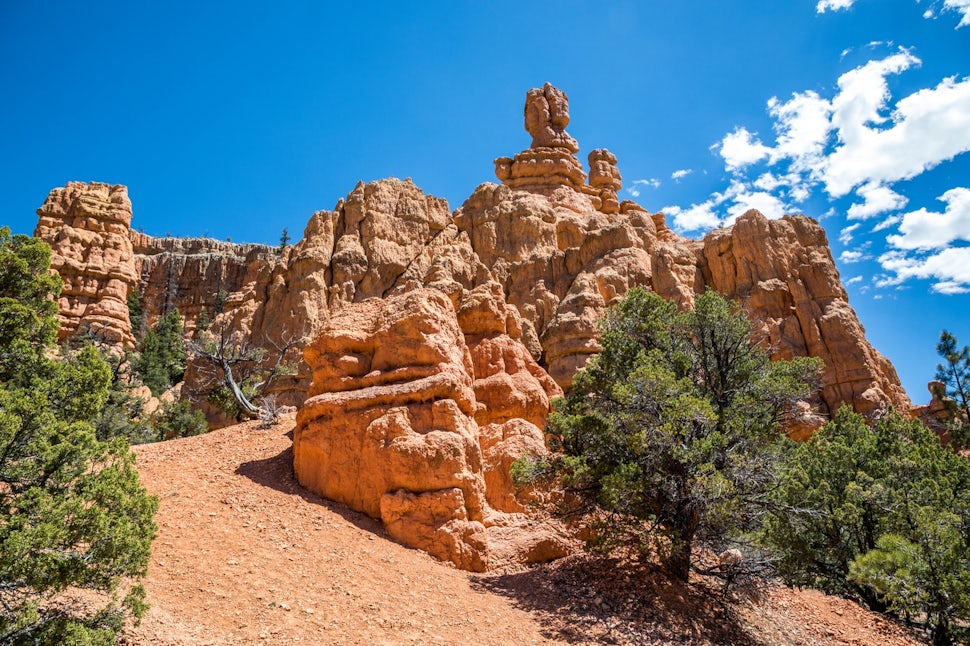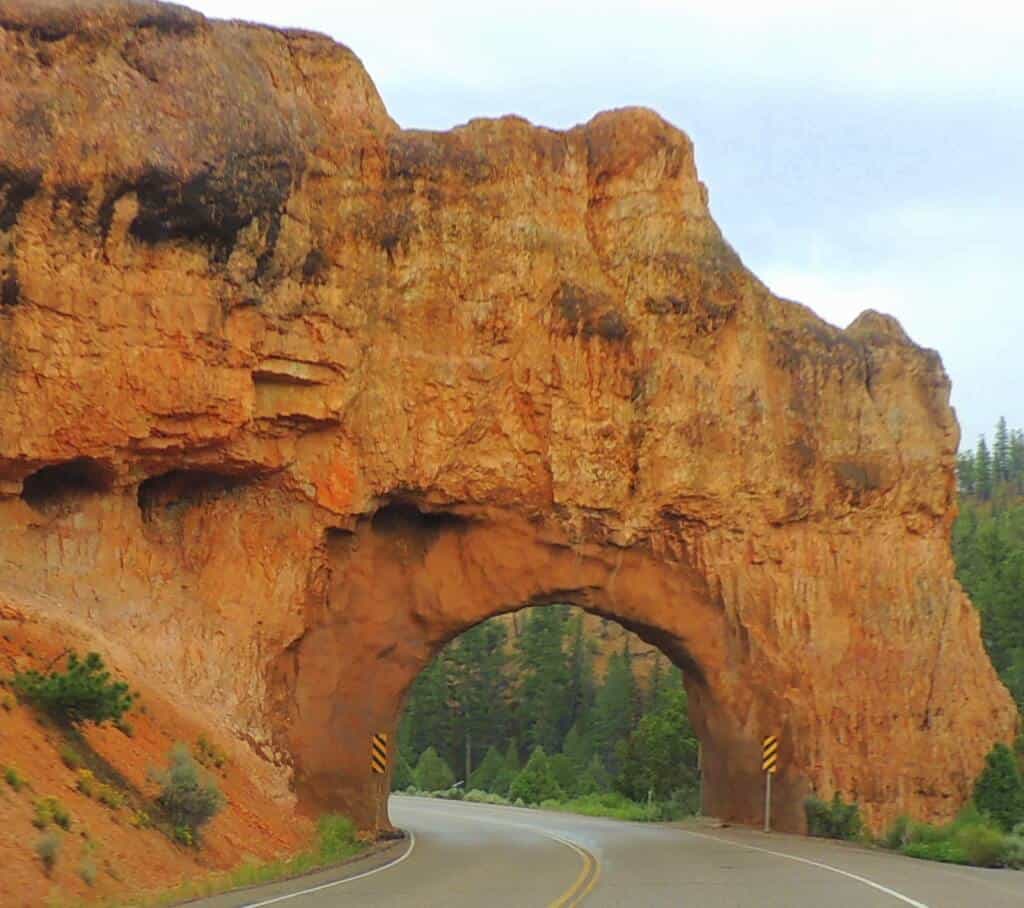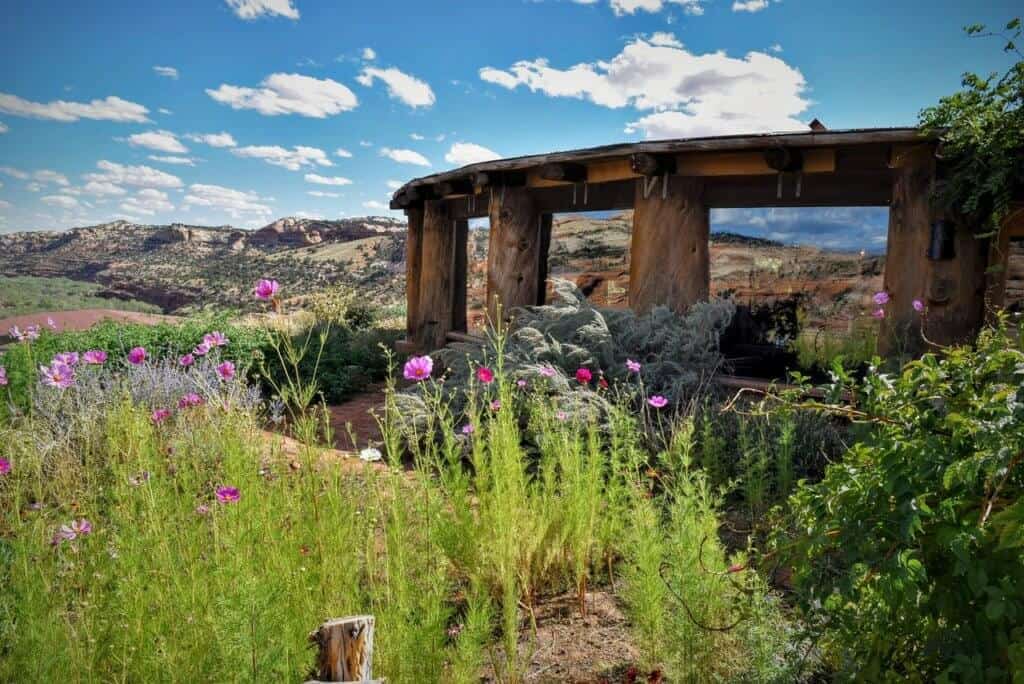Discover Scenic Byway 12 in Utah
Ready to embark on a 124-mile journey into the most stunningly beautiful landscape in the southwest?

Our family has embarked on back road journeys all over America, but we happened upon one stretch of pavement quite by accident. Since we first became acquainted with Scenic Byway 12 in Utah, we’ve been fueling our road trip dreams on the mere memory of the time we spent there.
Highway 12 in Utah is a National Scenic Byway, but we didn’t know that when we motored through. We had no idea that we were embarking on a 124-mile journey into the most stunningly beautiful landscape in the southwest. I’d even argue that it is the most incredible visual experience in America – a landscape so ruggedly desolate that the drive alone is an experience worth writing about.
But there’s more to Utah Scenic Byway 12 than extraordinary beauty as viewed from the window of your road warrior machine. Your journey could be extended for weeks as you explore two national parks, three state parks, and millions of acres of national recreation and forest lands. Here are some highlights of this fabulous road trip – an absolute must for everyone who wants to fall hopelessly in love with the open road.
Panguitch and Red Canyon

A red rock tunnel straddles highway 12 in Red Canyon, Utah. Photo credit: Tara Schatz
Traveling from west to east, you will begin your adventure in the little town of Panguitch. A historically-rich village that is steeped in the weather-beaten charm of the wild west, Panguitch is the place to stock up on provisions, throw back a drink at an authentic saloon, or embark on a historical walking tour. Just 25 miles from Bryce Canyon, Panguitch boasts a growing tourist economy while still maintaining its small-town roots.
From Panguitch, you will enter Red Canyon, which is where the excitement begins. Turn up your favorite tunes and prepare to be amazed at the pillars, pinnacles, and spires that stretch out for miles, and provide jaw-dropping spectacles around every bend.
Your first stop is not far from Panguitch. If you’re into careening down a mountain on two wheels as the scenery blurs past and hikers run for safety, pull off at the trailhead of the Thunder Mountain Trail. It’s a world-class mountain biking destination and combined with the paved Red Canyon bike path, it makes a great loop for experienced riders. At one point, the cliffs drop off on two sides and you can see for miles in every direction. Just don’t look down.

Mountain biking in Utah is pretty hardcore! Image by Chris Engelsman
The Red Canyon Visitor Center is the perfect place to stretch your legs, learn more about the geological forces behind the landscape, and eat a picnic lunch. If you skipped Thunder Mountain, you might want to take a leisurely stroll on the Pink Ledges Trail. It’s a short, interpretive hike from the visitor center that leads you through a conifer forest to the base of a red rock cliff. Don’t forget your camera – even the cliffs around the visitor center are stunning!
Bryce Canyon National Park

Beautiful Bryce Canyon. Photo by Tara Schatz
A lot has been written about the dazzling beauty of Bryce Canyon, so I won’t go into detail here. I will say that driving through and stopping at all of the vistas is pretty amazing in its own right, but you simply must spend at least one night in the canyon. We camped at Sunset Campground, which is close to some pretty awesome hiking trails.
If you make a point of getting up before the sun, you can watch it rise over the hoodoos and bathe the canyon in a rainbow of colors. Then, before the campground comes to life and you head back down for your morning coffee, you will feel like you are the only one in the vast empty canyon, and you’ll embark on a life on the road, changed forever. Okay, that’s just my little fantasy, but Bryce Canyon and this particular road trip really did rock my world.

Bryce Canyon at sunrise. Photo by Nick Oman
Escalante Petrified Forest State Park
Travelers on Scenic Byway 12 often pass this park by in favor of more majestic and popular scenic attractions, but this quiet underachiever has some secrets to share if you give it half a chance. Here you will find a small, 22-site campground, a reservoir for bird watching, canoeing, and swimming, and some cool geological wonders.
While this petrified forest is less impressive in color and magnitude than the national park in Arizona, Escalante’s beauty lies in its obscurity and opportunities for solitude. Two short trails snake through the park. The first – Petrified Forest Trail, climbs up behind the campground and offers panoramic views of the surrounding park. The Trail of Sleeping Rainbows is a bit steeper with larger petrified specimens. In July, when we passed through, we shared the whole park with one other camper.
Coffee with a View and a Pueblo Village

The views are real at Kiva Koffeehouse. Image by roadtrippinwithbob on Pixabay.
Heading east on route 12 in Utah, you will just start to get into your driving groove when you will spot a sign for coffee. The magnetic pull of the road may be too strong for you to resist, but I urge you to pull off and visit the Kiva Koffeehouse.
This one-of-a-kind building is modeled after a traditional southwestern kiva. It is perched on the side of a cliff with expansive views of the canyon. What’s more, the coffee is really good, especially if you’ve been drinking gas-station mud since San Francisco. On this particular road trip, our family had a thing about visiting coffee shops. They were our weakness and a huge source of comfort, especially in foul weather.
By the time we reached Kiva Koffeehouse, we hadn’t had a decent cup since the coast, and we didn’t have high hopes for remedying the situation any time soon. We were happily surprised by the quality of the pastries and the coffee at Kiva, and we were stunned by the beauty of the building and the amazing views.
Just below the coffee house is a private cottage rental that we had to pass by. Kiva Kottage can be rented by the night or on a weekly basis in all four seasons.
Next stop – Anasazi State Park Museum. This small museum and reconstructed Anasazi village is a quick and interesting spot, perfect for your picnic lunch, and especially fun if you have kids. The museum contains authentic pottery and a number of artifacts that were excavated on-site. The Anasazi, or Ancestral Pueblos, occupied the spot from 1050 until about 1200. The village is a combination of original excavation and reconstruction and is very well done, a perfect side trip for history buffs and homeschoolers like us.
Capitol Reef National Park

Wide-open spaces in Capitol Reef National Park. Photo by Holly Mandarich
The last stop on your highway 12 adventure isn’t even on highway 12, but just to the east. Capitol Reef National Park is one of the least visited national parks in Utah, but rich in history and full of charm. This area was inhabited for thousands of years by nomadic hunters before the Fremont people finally settled down in 500 CE. Petroglyphs from this time period can be viewed from a boardwalk just a short walk from the parking area. It is incredible to think that this ancient art has stood the test of time and the elements.
Mormon pioneers settled the valley in the 1800s as a mission, planting an abundance of fruit trees and farming the fertile land. This settlement was short-lived, but the orchard is still maintained by the National Park Service. In fact, the historic orchard at Capitol Reef is the largest in the national park system, with more than 3,100 fruit and nut trees.
The orchard is open to the public for picking, but we were a bit early for the harvest when we headed through in July. We did, however, score a fresh-baked cherry pie and homemade ice cream at the Gifford Homestead store. Fresh-baked pie when you’re living out of your car is a pretty big deal indeed.
This is where our journey on Highway 12 comes to an end, but there are endless opportunities for hiking, backpacking, and biking in this part of Utah!
This article first appeared on Back Road Ramblers. Feature photo by Crystal Sibson.
We want to acknowledge and thank the past, present, and future generations of all Native Nations and Indigenous Peoples whose ancestral lands we travel, explore, and play on. Always practice Leave No Trace ethics on your adventures and follow local regulations. Please explore responsibly!
Do you love the outdoors?
Yep, us too. That's why we send you the best local adventures, stories, and expert advice, right to your inbox.







